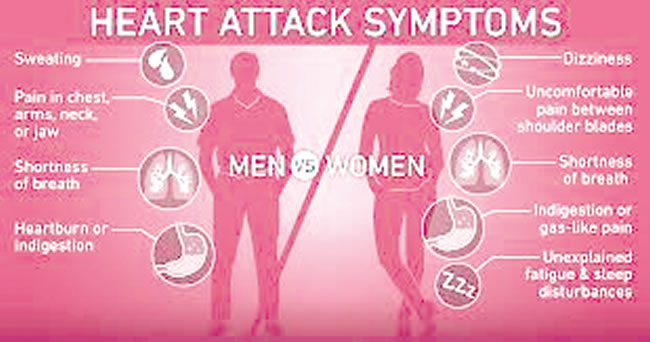
For both men and women, heart disease is the number one cause of death across the world. And while both s3xes suffer from this menace of health-related issues, there are key differences in how it develops, presents and is addressed between the sexes.
Heart disease has major impact on many women’s lives but awareness about it has typically focused more on men than women.

There are differences in male and female bodies that affect how heart disease develops; women have smaller hearts and smaller blood vessels, this difference is significant because sometimes smaller vessels don’t show up well on an angiogram so signs of blockages can be missed in some women.
Also, women also tend to develop heart disease in the smaller blood vessels of the heart instead of the large coronary arteries commonly seen in men.
Female reproductive health history and heart disease are closely related. Women with endometriosis were found to be three times more likely to develop some form of heart disease than women without it. In addition, women who develop gestational diabetes during pregnancy or preeclampsia, a complication of pregnancy that causes high blood pressure and places stress on the organs, may also have an increased risk for heart attacks.
In terms of symptoms, many of the “classic” heart attack signs like crushing chest pain are based on research done on men. Women may experience chest pain, but may also have flu-like symptoms including nausea, vomiting, dizziness, shortness of breath.
However, almost two-thirds of women who die suddenly from heart disease had no prior symptoms. Also, women are more likely than men to develop several diseases that have symptoms similar to a heart attack like chest pain and shortness of breath. Such include a condition called coronary spasm, where a vessel that supplies blood to the heart clamps down; this temporarily constricts the blood flow, mimicking a heart attack and coronary dissection, when the wall of a coronary artery tears, patients, usually women who may not have any history of heart disease.
Takotsubo cardiomyopathy, also called broken syndrome is another look-alike symptom. It is an inflammatory condition that causes the heart to enlarge after a period of emotional distress; some of these look-alike conditions can be less severe than a heart attack, but others are just as dangerous, so it’s always important to check when you are experiencing any symptoms.
Women are less likely to be prescribed drugs that control blood pressure or lower cholesterol after having a heart attack than men. Women are also less likely to be prescribed baby aspirin, a medication widely recommended for people with a history of heart attack.
Women may need a different approach to treatment to get the best outcomes compared to men; a more conservative approach to treatment may be more successful for some women as women have higher mortality rates for coronary artery bypass surgery.
When being treated for a heart attack, women are more likely to experience medical bias. There is evidence that physicians may be less aware of risk factors of heart disease in women and some women feel their concerns are not taken seriously.
READ ALSO: Olubadan to unveil first digital classroom in Ibadan, Thursday







